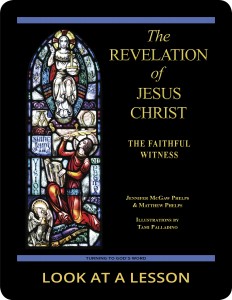first fruits
 In the book of Deuteronomy, the Israelites are asked upon entering the Promised Land to give back to God the first of the fruits of the land as a sign of their indebtedness to God. This sign then also becomes a perpetual obligation, though it’s possible to see how the Israelites could argue that their duty had been fulfilled upon their arrival.
In the book of Deuteronomy, the Israelites are asked upon entering the Promised Land to give back to God the first of the fruits of the land as a sign of their indebtedness to God. This sign then also becomes a perpetual obligation, though it’s possible to see how the Israelites could argue that their duty had been fulfilled upon their arrival.
Just before this weekend’s passage in the book of Deuteronomy 26:2 (NABRE), the LORD’s instruction begins: “you shall take some first fruits of the various products of the soil which you harvest from the land…”. In this passage, the Hebrew text uses two words together for first fruits, one word that means first, רֵאשִׁית (re’shiyth), and another that means fruit, פְּרִי (pĕriy). Later in the same passage, however, in what the people are commanded to say to God, the language changes. The book of Deuteronomy 26:10 (NABRE), translated as “therefore, I have now brought you the first fruits of the products of the soil which you, LORD, have given me,” omits the Hebrew word for first. It’s worth noting additionally that Hebrew contains a third word, בִּכּוּר (bikkuwr), that also means first fruits. This third word, which doesn’t appear in this passage, usually was applied to the very first pickings around the harvest festival of Pentecost.
Implicit from the shift in language in this passage is an incredibly important point. While God asks only for the first fruit from the land, that doesn’t mean that the first is all God has claim to. God’s rightful claim is over all the fruit of the land. Everything produced by the land belongs to God because God gave the land to his people. When giving a portion to God, then, it’s incumbent on the people to remember the LORD’s rightful claim. The same holds true for us. If we’re to allow God to deliver us from evil and sin, he has a rightful claim to our entire lives. In this season of Lent, we’re asked to give a bit more back to God as a reminder of his true and rightful portion.
you also may like our study of the book of Revelation
 The Revelation of Jesus Christ: The Faithful Witness, a 23-lesson Catholic Bible study with an imprimatur, examines ways in which our traditional Christian view of heaven is built on Hebrew apocalyptic visions recorded in the Old Testament. This recently revised study includes maps and additional commentary and takes a close look at the role of the prophets in present-day Christianity. Illustrations by Tami Palladino depict the often-misunderstood images in the book of Revelation. Click on the book’s cover to view a sample lesson.
The Revelation of Jesus Christ: The Faithful Witness, a 23-lesson Catholic Bible study with an imprimatur, examines ways in which our traditional Christian view of heaven is built on Hebrew apocalyptic visions recorded in the Old Testament. This recently revised study includes maps and additional commentary and takes a close look at the role of the prophets in present-day Christianity. Illustrations by Tami Palladino depict the often-misunderstood images in the book of Revelation. Click on the book’s cover to view a sample lesson.
 Click on the picture of the statue of Moses with horns (above) to learn more about Lost in Translation. A new entry is archived each Monday. Contact us to receive Lost in Translation by email every week. You may use any of the contact links on our website to ask Matthew a question.
Click on the picture of the statue of Moses with horns (above) to learn more about Lost in Translation. A new entry is archived each Monday. Contact us to receive Lost in Translation by email every week. You may use any of the contact links on our website to ask Matthew a question.
